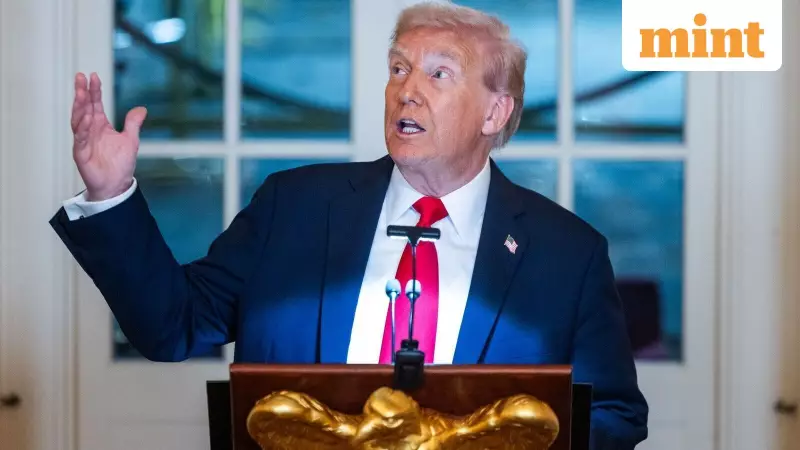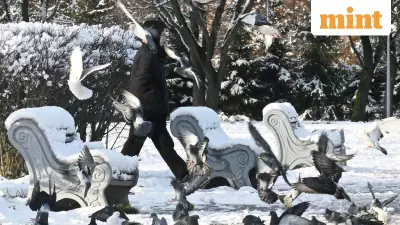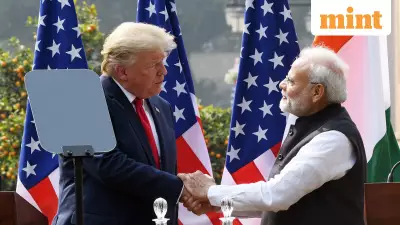
US Administration Prepares Tariff Alternatives Ahead of Crucial Supreme Court Verdict
The Trump administration is actively developing contingency plans for maintaining presidential tariff authorities, as the Supreme Court prepares to deliver a landmark judgment on the legality of current tariff impositions. According to Bloomberg reports citing knowledgeable US officials, both the Commerce Department and the Office of the US Trade Representative have been analyzing alternative legal pathways should the court rule against the existing tariff framework.
Legal Alternatives Under Consideration
White House officials are examining several backup options, primarily focusing on Section 301 and Section 122 of the Trade Act, which provide the President with unilateral power to impose duties. Section 301 enables the US Trade Representative to investigate and counter unfair foreign trade practices affecting American commerce. Meanwhile, Section 122 would permit the President to implement a 15% tariff threshold, matching levels agreed in various negotiations, though this authority would be limited to 150 days.
These alternative methods present certain limitations compared to the broad powers President Trump has previously utilized. They typically operate more slowly or face restrictions in scope, and are likely to encounter their own legal challenges if implemented.
Administration's Determination Despite Legal Uncertainties
The administration remains hopeful for a favorable court decision, with Trump repeatedly advocating for upholding his tariffs on trading partners. However, these preparatory measures indicate recognition of potential unfavorable outcomes, especially given the court's earlier expressed skepticism toward country-based tariffs.
Tariffs continue to represent a fundamental component of President Trump's economic agenda, regardless of the judicial outcome, confirmed an official speaking to Bloomberg. The administration's position was summarized by Trump himself on Wednesday: "We're waiting for a decision. We hope it's going to be good, but if it's not, we'll do — we always find ways, you know, we find ways."
White House spokesman Kush Desai reinforced this stance, telling Bloomberg: "President Trump lawfully exercised the emergency tariff powers granted to the Executive Branch by Congress, and the Administration is confident in ultimate victory on this matter by the Supreme Court. The Administration is always examining new ways to address America's historic goods trade deficit and reshore the manufacturing that's critical to our national and economic security."
Potential Consequences and Additional Options
The Supreme Court's decision, with no confirmed delivery date, could take several approaches: upholding current tariffs, eliminating them entirely, or adopting a more targeted strategy. Any ruling against the administration could create significant uncertainty for businesses and foreign governments while potentially forcing the return of more than $88 billion in already collected duties, according to Bloomberg Economics estimates.
The case specifically addresses Trump's use of the International Emergency Economic Powers Act (IEEPA), which facilitated reciprocal global import tariffs, along with levies on Chinese, Canadian, and Mexican goods related to fentanyl, and charges on Brazilian products in an unsuccessful attempt to halt the prosecution of former president and Trump ally Jair Bolsonaro.
Bloomberg Economics calculates that the total effective tariff rate on US imports stands at approximately 14.4%, with IEEPA duties accounting for more than half this amount. Economists anticipate that "most duties would eventually be fully replaced" if the Supreme Court invalidates country-based levies.
Backup mechanisms are already being activated in some instances. Trump has initiated a Section 301 investigation against Brazil and maintained Section 301 tariffs on certain Chinese products from his initial term. This provision normally requires comprehensive investigation before duty implementation.
National Economic Council Director Kevin Hassett confirmed that Trump might invoke Section 301 or 122 authorities to reestablish import tariffs if the Supreme Court rules against the administration. "There are a lot of things that we could do so that we could reproduce the policies that we have right now with alternative authorities," Hassett stated during a Bloomberg interview.
Additional options include Section 338 of the Tariff Act, granting presidential authority to impose tariffs up to 50% or exclude imports from countries practicing discrimination against US interests. However, this provision has never been used and would likely face immediate legal challenges.
Trump has previously utilized Section 232 of the Trade Expansion Act to impose tariffs on metals and automotive industries. The administration has launched new investigations and introduced additional duties, though the inclusion of finished products has drawn criticism from trading partners like the European Union, which argues this violates agreed limitations in the US-EU trade agreement.
Implementation Challenges for Alternative Measures
The alternative tariff mechanisms present significant implementation difficulties due to their inherent limitations. Officials must navigate complex legal questions, including whether Section 122 tariffs can be imposed simultaneously, canceled before expiration and reinstated under new timeframes, or whether duties could be applied retroactively to prevent refunding money collected under the current system.
These preparations underscore the administration's commitment to maintaining aggressive trade policies while acknowledging the legal vulnerabilities of current approaches. The Supreme Court's decision will determine whether Trump can continue using his preferred tariff instruments or must transition to potentially less effective alternatives.





